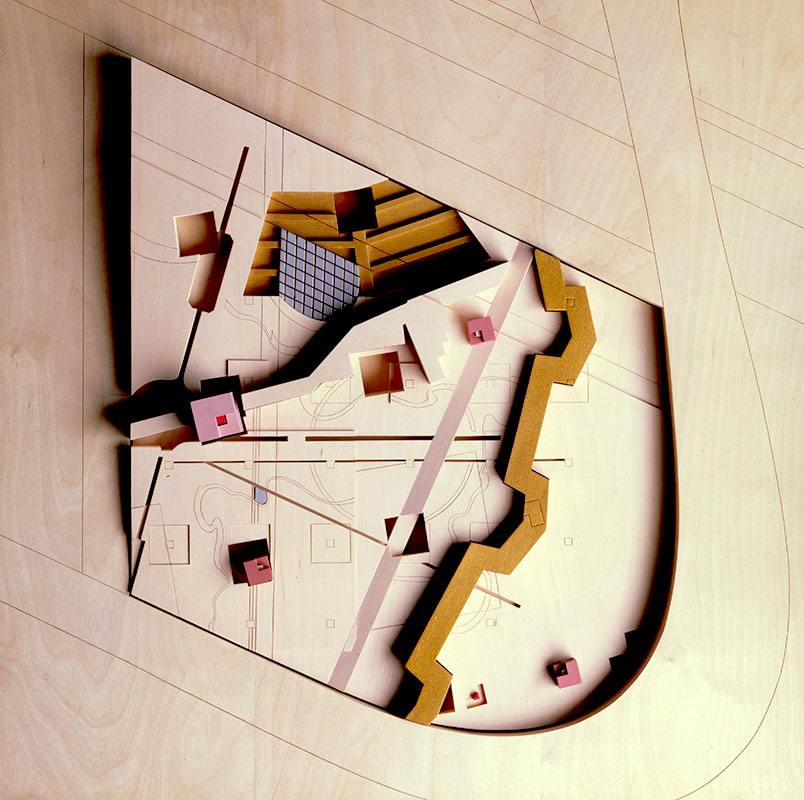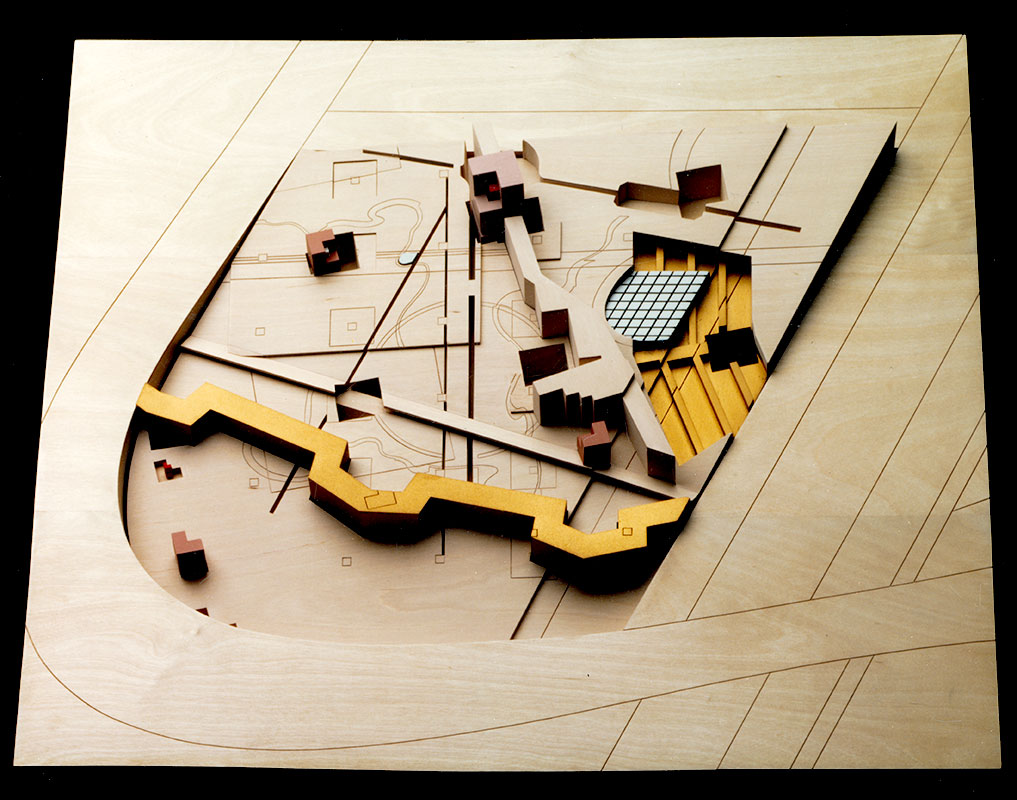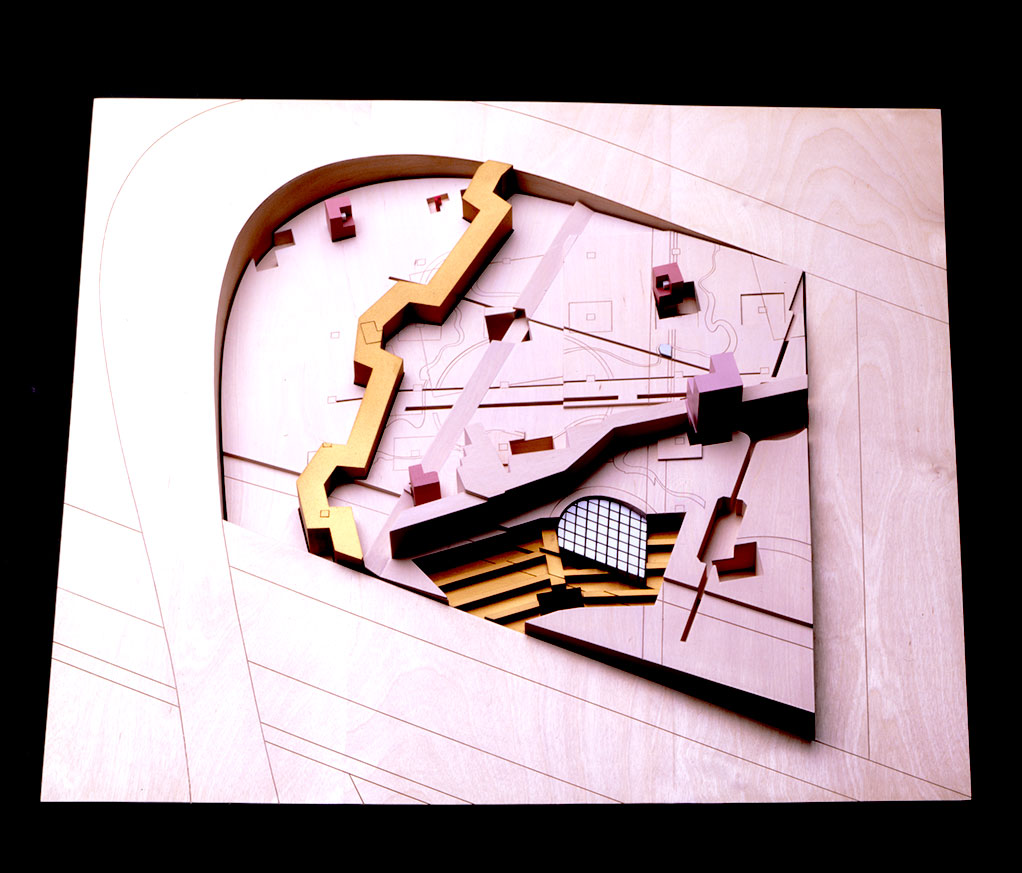
LA VILLETTE
Location: Paris, France
Year: 1987
This
project for a garden in the Parc de la Villette is a study of time – past,
present, and future – and a questioning of representation in architecture. It
attempts to replace the actual conditions of time, place, and scale with
analogies of these conditions. The site, for example, does exist at a certain
time – the present – yet the project site is made to contain allusions to the
present, past, and future. To this end, analogies are made between the
conditions that existed at the site in 1867, when an abattoir occupied it, to
Paris in 1848, when the site was covered with the city walls, and to Paris at
the time of Bernard Tschumi’s La Villette project – the present. Combined with these
traces of time are representations of our Cannaregio project, which
coincidentally shares some of the same features as the present site – the wall,
the abattoir, and an existing grid. In this way, the site contains its own
presence as well as the absence of its own presence (the past and future) in a
set of superpositions.
Through changes in the scale of elements of both the Cannaregio and Tschumi projects, relationships are discovered that would have been overlooked in traditional methods of design. The resultant ambiguous nature of time and place suggests an architecture that exists not only in the present, but reverberates in time, suggesting an ever-increasing set of references.
Jacques Derrida, the French philosopher, collaborated with Peter Eisenman on the theoretical background for this project.
Through changes in the scale of elements of both the Cannaregio and Tschumi projects, relationships are discovered that would have been overlooked in traditional methods of design. The resultant ambiguous nature of time and place suggests an architecture that exists not only in the present, but reverberates in time, suggesting an ever-increasing set of references.
Jacques Derrida, the French philosopher, collaborated with Peter Eisenman on the theoretical background for this project.
Concept
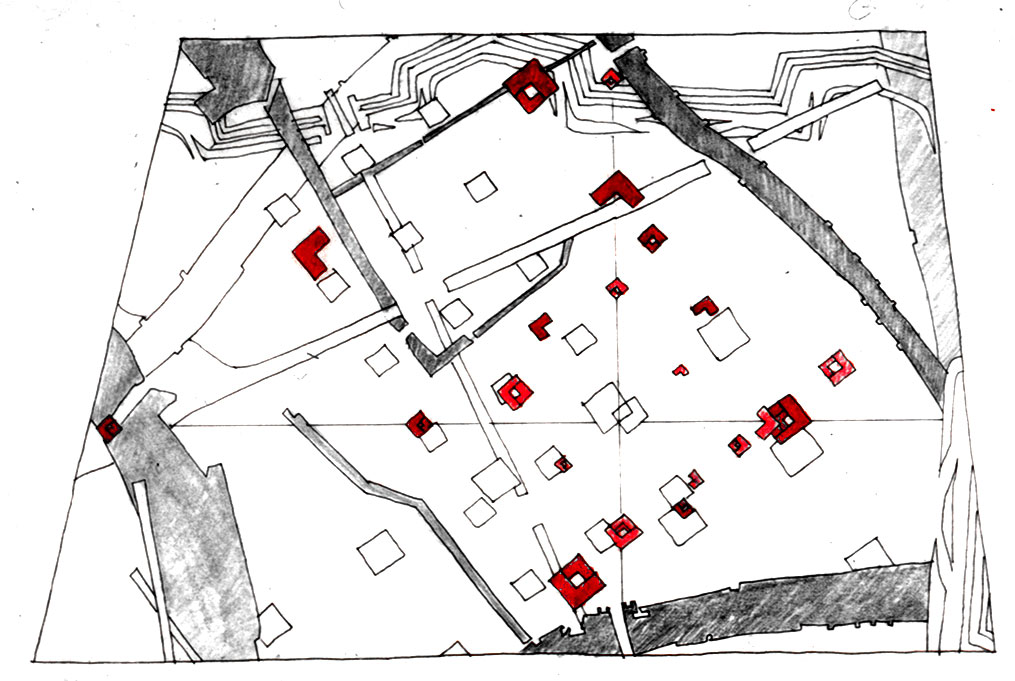


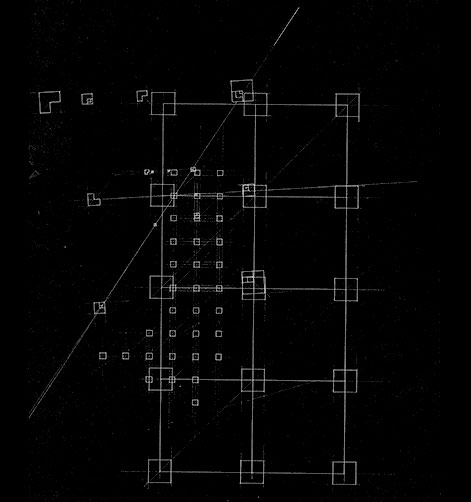

Drawings
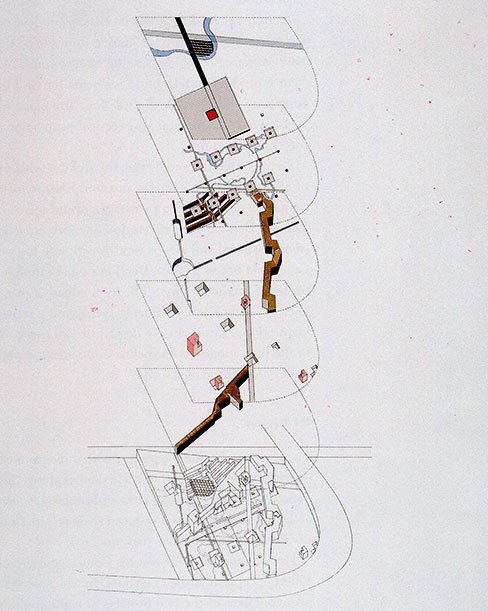

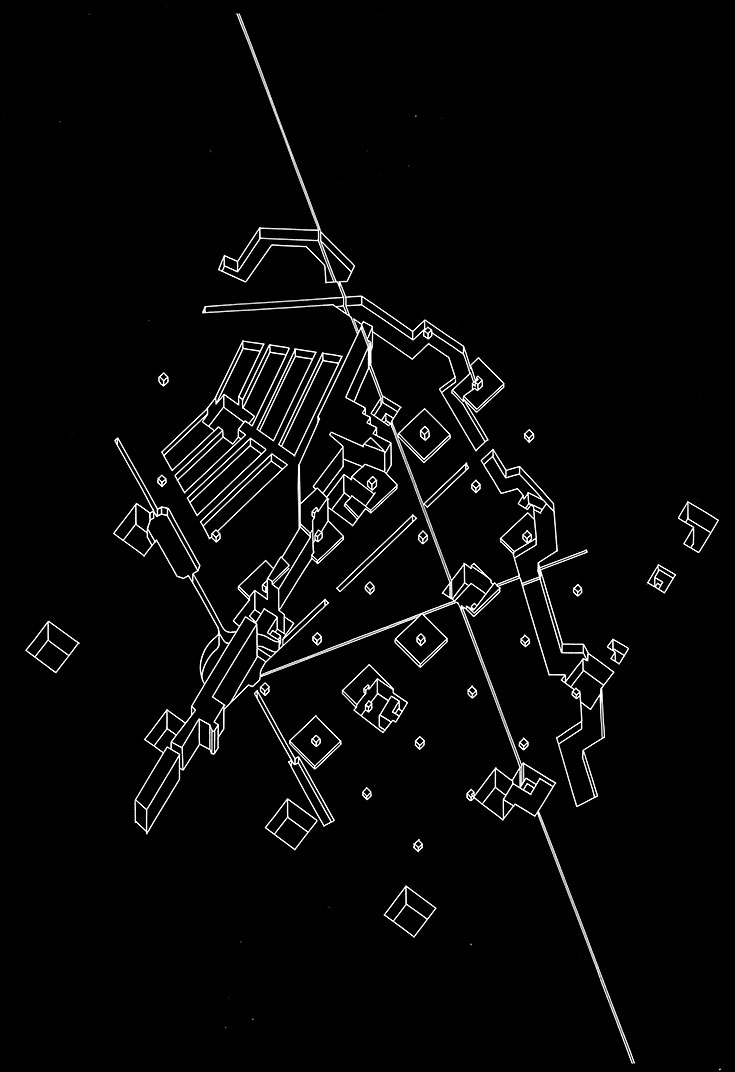
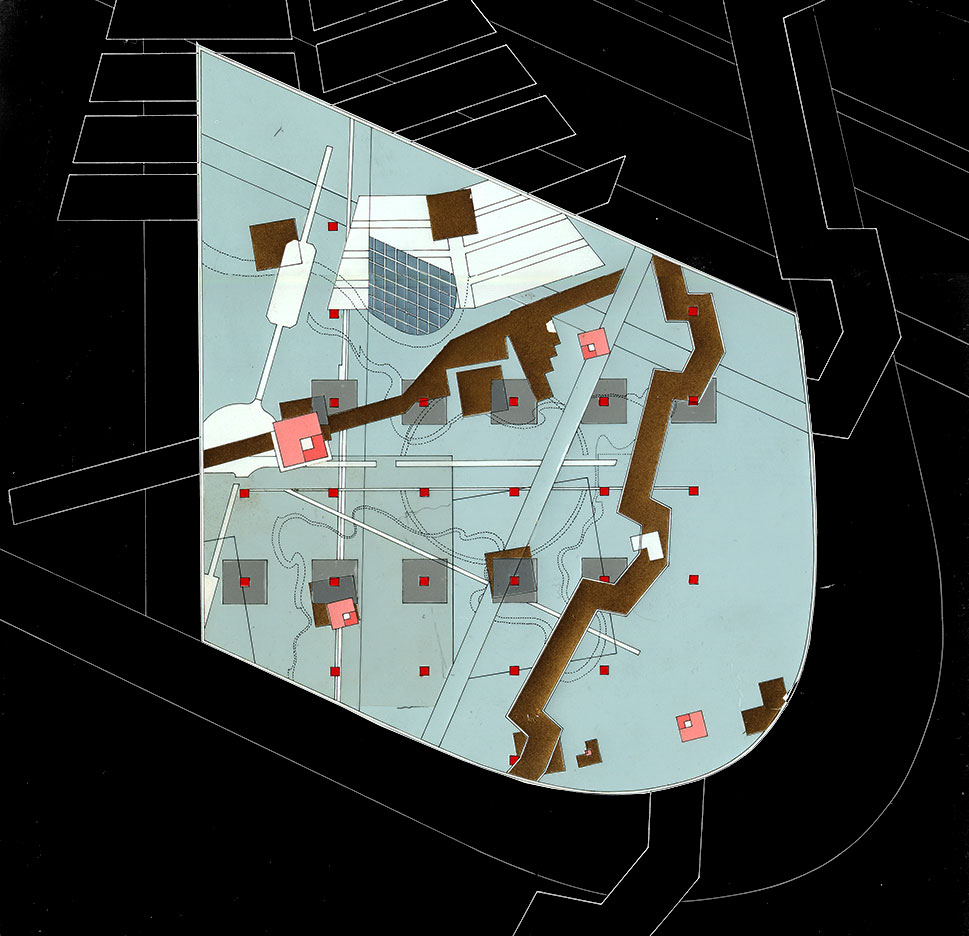
Model photos
